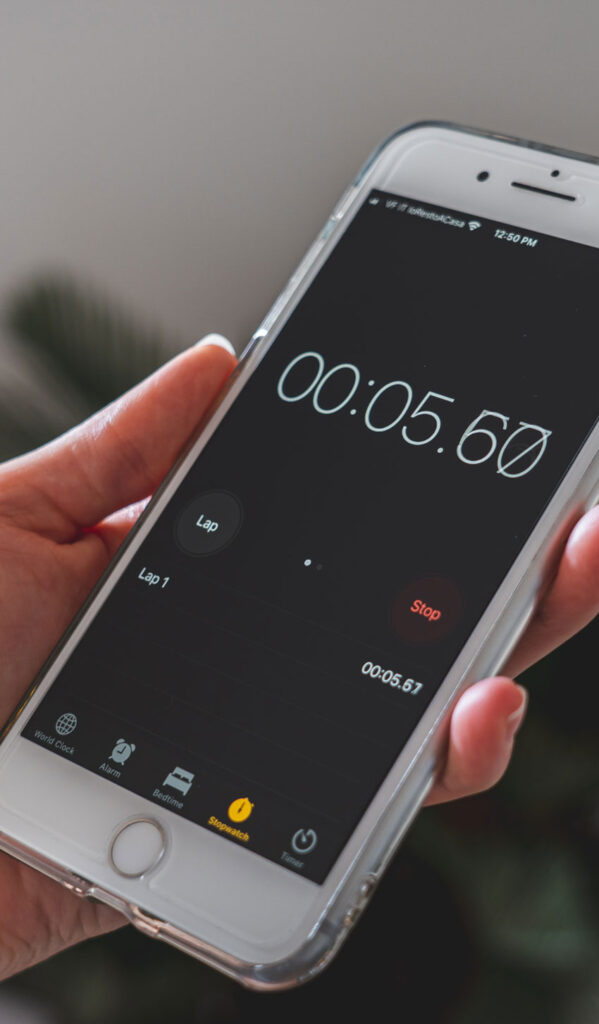More words translated = more money, right? Seems like a simple formula. But you might be wondering ‘How can I translate words quickly?’ Is there a way to boost your productivity working as a translator? In this post, I’ll teach you how to translate faster, based on the tips and tricks learned during my career as a professional translator!
PIN THIS POST TO READ IT LATER!

DISCLAIMER
This post may contain affiliate links, which means I’ll receive a commission if you purchase through my links, at NO extra cost to you. Read my Disclaimer for more information. Hope you find this post useful!
- How To Translate Faster To Make More Money From Home
- Type Faster
- Understand The Client’s Requirements
- Work On Texts Related To Your Area Of Expertise
- Skip difficult Terms And Come Back To Them Later
- Use A Second Monitor
- Be Well-rested
- Avoid Getting Interrupted
- Use A Timer
- Leverage Translation Memories
- Utilise Orthography And Grammar Checkers
- Ensure Your Environment Is Pristine
- Study, Study, Study
- Can You Translate 1,000 Words In An Hour?
- Do You Need To Be Fluent To Translate?
How To Translate Faster To Make More Money From Home
If you’re looking for ways to make more money translating, it’s high time you learn how to translate faster.
Increasing your translation speed will help you complete more volume of work, which will bring you more money at the end of the day.
So, here are 12 tips on how to translate faster without compromising quality:
- Type faster
- Understand the client’s requirements
- Work on texts related to your area of expertise
- Skip difficult terms/paragraphs and come back to them later
- Use a second monitor
- Be well-rested
- Avoid getting interrupted
- Use a timer
- Leverage translation memories
- Utilise orthography and grammar checkers
- Ensure your environment is pristine
- Study, study, study
Type Faster

One of the most required skills to translate faster is having the ability to type at lightning speed.
You see, spending ages trying to find the right key on the keyboard is an absolute productivity killer.
Instead, train yourself to ‘touch type’, i.e. typing without looking at the keyboard.
Sites like Typing Club will you help get a grasp of touch typing and practising it until you type like a pro.
Plus, I recommend knowing the shortcuts of the software you use to translate AND installing Hot Keyboard Pro to paste terms or phrases you use frequently for particular clients and launch apps in a second.
Understand The Client’s Requirements

Before getting down to work on your translation, ask all the necessary questions to understand the project to the fullest and avoid future back-and-forth emails with your client.
Who’s the target audience?
What’s the purpose, context, and mode of the text?
Is the deadline flexible?
Will they provide you with a glossary to work with?
Should you keep the original layout and formatting?
These are some of the questions you should ask your client before doing the actual translation and save precious time during the translation process.
Work On Texts Related To Your Area Of Expertise

Looking up terms in the dictionary, doing research, and comparing parallel documents are some of the tasks that take up most of our time as translators.
That’s why you never want to take up work that is not related to your field of expertise.
Say you are specialized in medical terminology and then take up a project dealing with aerospace engineering.
You’re practically digging your own grave!!
Instead, work with texts that you know you’ll feel comfortable working with and for which you have glossaries prepared from previous related projects.
Skip difficult Terms And Come Back To Them Later
We, translators, are kind of perfectionists.
When encountering an unknown term or a paragraph with a complex idea, we want to translate them in the best way possible, so that the final target text reads naturally and beautifully.
But we get stuck trying to find that perfect equivalent.
And that kills your productivity.
In these cases, skip the term or paragraph and come back to them later.
As for the unknown term, sometimes its meaning is clarified later in the text.
It happens the same with the difficult paragraph: we can work out a translation after analyzing the rest of the text.
Whatever the case may be, work on the things you don’t know at the end of the first draft to have a great part of the translation already done and have plenty of time to polish those challenging details.
Use A Second Monitor

Looking to increase your output?
Invest in a second monitor.
This amazing time-saver allows you to consult reference documents, personal glossaries, and the web browser without having to switch between windows.
Faster workflow = more words translated.
I personally use this one and I love it.
You’ll fall in love with your dual monitor setup!
Be Well-rested

I know, I know… In general terms, translators don’t sleep 😂
But, c’mon, let’s put your time-management skills to work and try to get a good night’s sleep to get back to your office feeling refreshed.
Sleep deprivation impacts negatively on your energy levels, which makes you sluggish and less productive.
Try to get those 7 to 8 hours of sleep and take power naps when possible to skyrocket your results.
Avoid Getting Interrupted

Another way of increasing your translation speed is eliminating distractions and interruptions from your workplace.
A cell phone pushing a million notifications each minute is a source of temptation for anyone trying to focus.
Try turning off the notifications and blocking websites and apps that you know are going to be a source of distraction for you.
Personally, replying to e-mails and Whatsapp messages and watching YouTube videos are my top distractions, so what do I do?
I leave my phone far away from my desk to avoid checking it every two minutes!
Use A Timer

I swear by timers.
The reason why they are so effective is that they make you feel that sense of urgency that pushes you to work quickly.
Not only that; they help you use small segments of time more efficiently.
If you are new to using timers, I suggest you try the Pomodoro Technique.
This time-management technique consists in working in 25-minute bursts, followed by 5-minute breaks.
During the breaks, you can reply to your messages, get some fresh air outside or do a short stretching session.
After 4 ‘pomodoros’, you can take longer breaks, given the fact that our brains can only focus for 90 to 120 minutes.
Leverage Translation Memories
CAT tools, i.e. Computer-assisted Translation software, offer translation memories that store previous translations and auto-fill the segments on the target column when they find a match.
Thus, you avoid having to re-translate the segment each time it appears during the translation.
This not only saves time, but also ensures consistency, which is key for professional translations.
The terminology glossaries uploaded to these tools also give you the option to use the pre-approved translations that the software auto-suggests.
Utilise Orthography And Grammar Checkers
Orthography and grammar checkers allow you to fix those stupid mistakes like typos or extra spaces that we tend to make while translating.
This makes the post-editing process so much faster!
Knowing that proofreading is a non-negotiable for your translations, counting on an orthography or grammar checker really comes in handy.
Let them make the first round of proofreading and then perform the second and third rounds to polish your text and add the finishing touches to it.
Ensure Your Environment Is Pristine

No one wants to work in a place that is cluttered and dusty.
I don’t know about you, but I hate it when my office looks messy 🤢
When doing your weekly reset, go to your office and do a deep cleaning session.
Sweep and mop the floor, put your charges and pens in containers, vacuum your office chair, clean your keyboard, mouse, screens, and cellphone and, finally, wipe your desk with an anti-bacterial spray (because we all know you eat at your desk).
Then open the windows to let the fresh air into the room, turn on some nice music, and enjoy the benefits of working in an immaculate-looking home office.
Study, Study, Study

Finally, what will give you the ability to translate faster is getting more and more specialized in your area of expertise.
The more you know, the faster you’ll complete the task at hand because you don’t need to look up terms in online dictionaries and do research to find equivalents.
What’s more, improving your writing skills will also make you a better and faster translator because you’ll know which linguistic constructions, collocations, and set phrases to use in each given case.
Can You Translate 1,000 Words In An Hour?

Short answer: No.
A professional translator needs at least 4 hours to translate 1,000 words to avoid compromising quality.
Sometimes, that amount can be translated in less time, but translation speed depends on so many factors.
It depends on how well the source text is written, the project difficulty, the source and target language, the translator’s expertise, whether CAT tools are used or not, the need to maintain the original format, and…Even your mood!
So, no, you can’t translate 1,000 words in an hour, unless you feel satisfied delivering a crappy translation to your client.
Do You Need To Be Fluent To Translate?
Absolutely yes! This is a non-negotiable!
In order to be a professional translator, you NEED to be highly proficient in the pair of languages you’ll work with.
This is to keep the meaning of the source text and sound natural in your translation.
Now, take into account that being fluent does not make you a good translator.
Apart from being fluent in your pair of languages, you have to learn translation skills and techniques AND be super meticulous!
This post was all about how to translate faster.
Now that you know these tips, put them into practice to translate faster than ever.
Do you have any other recommendations?
Leave them in the comments section!
RELATED POST:

How to Translate Faster to Make More Money From Home
DON’T FORGET TO SAVE AND SHARE THIS POST!




Leave a Reply